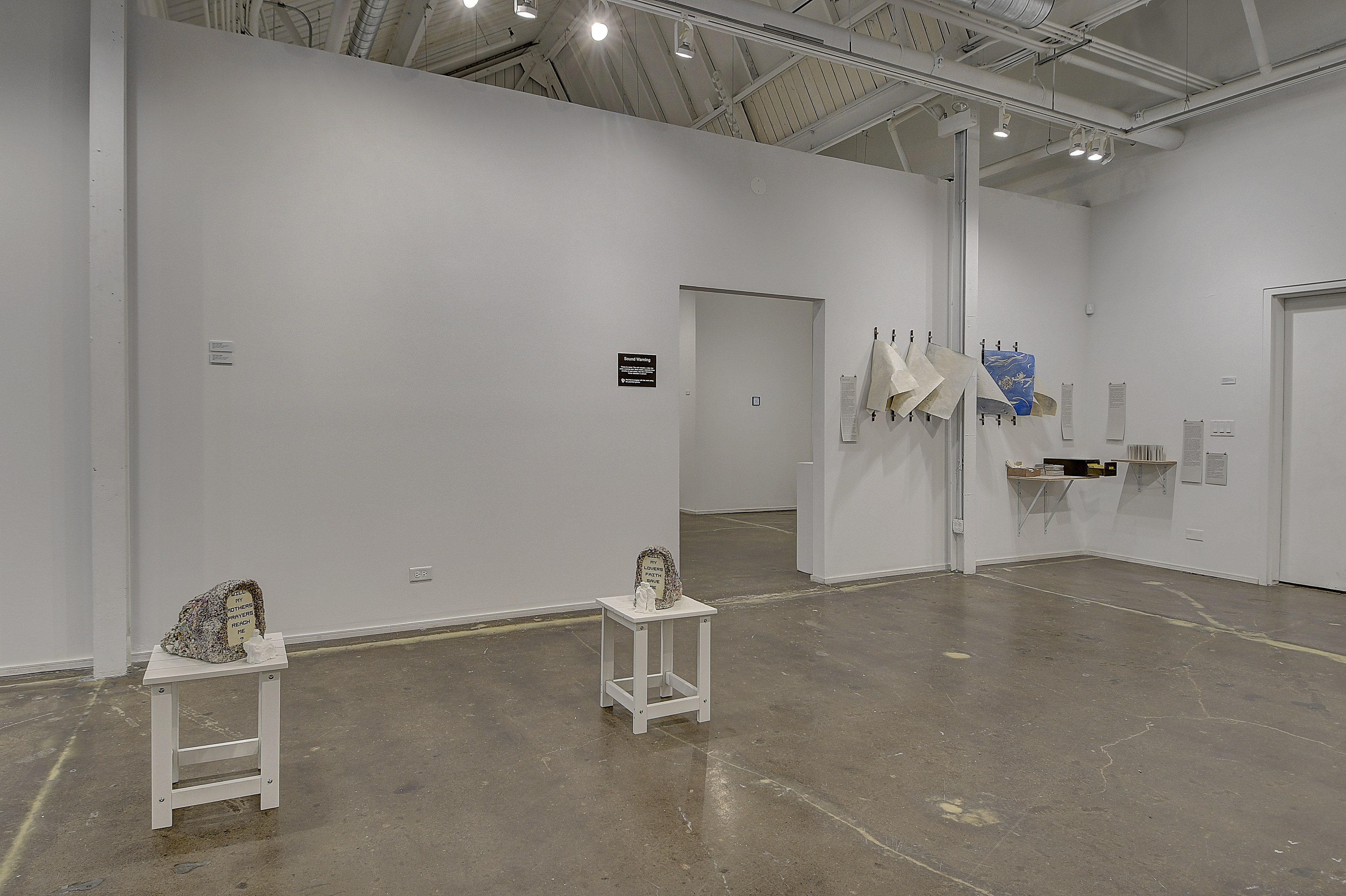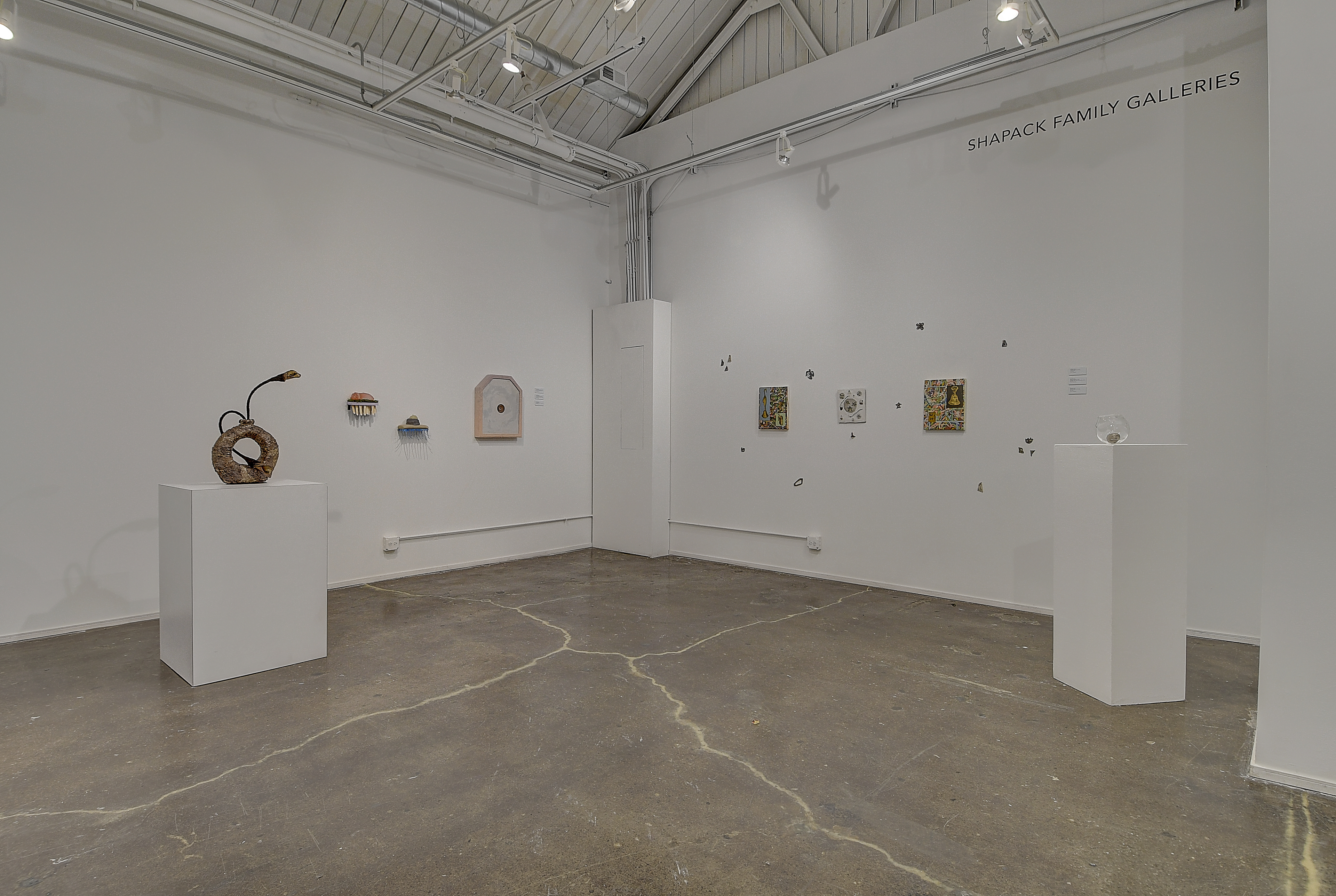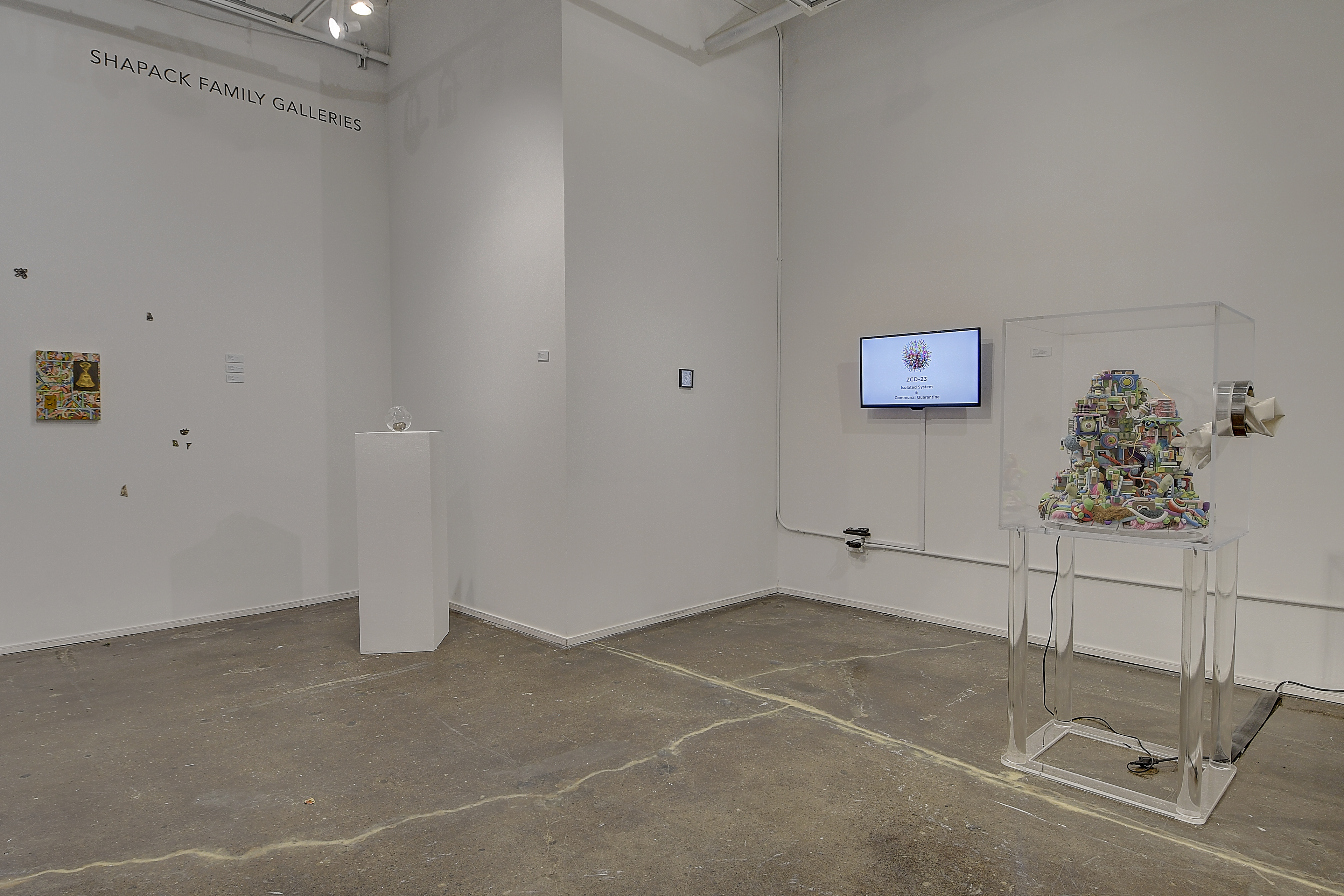Curated by Buchmueller, Denny Mwaura, and Sofía Sánchez Borboa
For storytelling is always the art of repeating stories, and this art is lost when the stories are no longer retained. It is lost because there is no more weaving and spinning to go on while they are being listened to. The more self-forgetful the listener is, the more deeply is what he listens to impressed upon his memory.
– Walter Benjamin
– Walter Benjamin
To be Continued… offers a series of character sketches that introduces the twelve HATCH ’23–’24 artists-in-residence. Providing glimpses into each of their practices, the exhibition is a prologue, laying the groundwork for the development of expansive bodies of work over the course of the residency. Tensions between figuration and abstraction; anxiety and serenity; forgetting and the recovery of memory; stasis and change; high art and popular culture; presence and absence appear throughout the exhibition, as artists address formal or material inquiries, personal histories, and collective experiences. This text serves as a table of contents, an introduction to the individual and intertwining narratives that are told within these walls.
Photo credit Chuy Benitez
As one enters the gallery, Ruby Que’s cast aluminum worry stones evoke mechanisms by which we rely to relieve whatever kind of anxieties and stress our bodies bear. With a background in disability justice, Youree Kim’s research-based practice investigates the complex ways in which disability is produced, recognized, and acknowledged in contemporary culture. Drawing reference to the idiosyncratic decorative style of Midwestern Catholic grottos, Sophia Karina English’s sculptures engage with histories of craft to share ruminations on faith, exploring how religious devotion affects communities and personal relationships. Armando Roman’s Gabriel over the Kitchen Table is a disruption of the ideas they were raised to believe were correct through color, pattern, and abstraction.

Photo credit Chuy Benitez

Photo credit Chuy Benitez

Photo credit Chuy Benitez
For Vince Phan and Molly Blumberg, their narratives speak of iteration and cycles of transformation across time and material modification. With The Ornaments on Me, Phan presents a memento mori, reframing death as part of ongoing, active processes of decay and regeneration, while Blumberg’s playful, intuitive making explores slippery overlaps between familiar bodily and domestic forms. Nicole Leung’s meditative and inconspicuous placement of cicada exoskeletons around the galleries call into the room the cathartic and haunting experience of shedding old skins to become ever-new. Michelle Chun’s fragmented compositions are shards of a longing to belong despite tensions of discomfort. Similarly playing with fragmentation and reconstruction, Sungho Bae’s video and accompanying sculpture cheekily emulate administrative responses to the threat of contagion.

Photo credit Chuy Benitez

Photo credit Chuy Benitez
Some of the exhibition’s tales take the form of hazy wanderings through perceptions and experiences of a shared reality, as seen in Alex Kostiw’s In Pursuit of the Tiger. Shonna Pryor deals with untold histories, with a painting that brings to light the obscured past of economic empowerment that ledgers from the Freedmen’s Bureau offered the formerly enslaved during the post-Emancipation period. Barber’s paintings composed of found fabrics and discarded materials render the figurative body into an abstracted motif that repeats throughout his oeuvre.
Photo credit Chuy Benitez
Photo credit Chuy Benitez
The artworks on view all recount pieces of the artists’ stories while simultaneously forming part of a larger narrative. As the next chapters unfold, the stories will grow through continuation, repetition, and variation in the residency’s upcoming two-person shows. Now, we encourage viewers to go beyond this text and listen to what the works themselves have to say.